Educator Onboarding
LEO Art Challenge Workshop
ICE 2019: Satellite Tracking, Orbits, and Modeling
SEEC 2019: Satellite Tracking, Orbits, and Modeling
Workshop:ITEC Trek-a-Sat
Workshop: 2018-01-27 Yerkes
Workshop: 2017-10-28 Carthage-Yerkes Electrostatics in Space
Workshop: 2017-06-29-BTCI-Life in Space!
Workshop: 2017-03-11 Yerkes
Workshop: 2017-02-07 SEEC
Workshop: 2017-01-28 Yerkes
Tools You Might Use
Educational Learning
Standards
Documentation
Fly Me to the Moons -- Middle School
Diagrama de temas
-
Written By: Frances Dellutri, Jr. High/Intermediate Level SpacEdge Education Team, Updated August 2023
Grade (Age) Level: Grades 5-8 (Ages 10-13)Updated 11/9/23
Key Topics Associated With Standards:Scale Properties, Astronomy, Solar System Models, Proportion, Quantity, Interpreting Data, Gravity, Patterns, Math, Moon, Modeling
US Standards: NGSS:
MS-ESS1-3 http://www.nextgenscience.org/dci-arrangement/ms-ess1-earths-place-universe
Summary: This interdisciplinary course will allow investigations into the relative location of objects in our solar system, how to change the scale of those items, the relative size of objects in a model. Students are further encouraged to conduct research on the moons in our solar system and then to make a model of one, complete with its features using artistic techniques.
Goals: The goals of the course are to impress scale modeling techniques and perspectives.
Pre-requisite: Understanding of ratios is helpful.
Index of Course Activities:
-
Students watch a short video from NASA:
Students then fill out a short questionnaire reinforcing what they have learned from the video and then set the stage for the subsequent activities to come in this course.
Archivo: 1 -
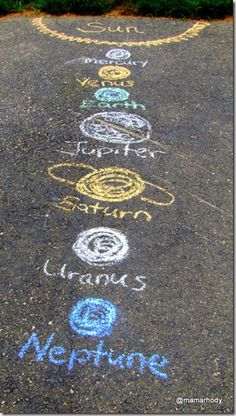 Students make a single page model of the solar system planet distances.
Students make a single page model of the solar system planet distances. The purpose of this activity is to reinforce student understanding of distances between planets in our solar system.
This exercise is simplistic but elegant in its impact on students.
Carpeta: 1 -
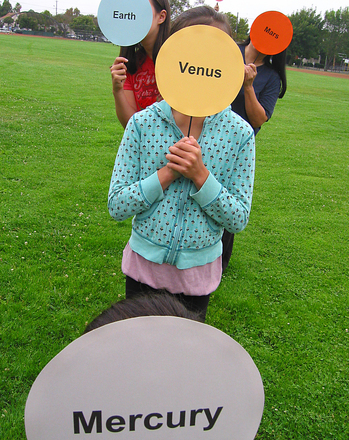 Instructions for leading your class through the experience of setting up a large solar system model
Instructions for leading your class through the experience of setting up a large solar system model will help your students focus on the massive distances involved in our solar system.
The resources will guide you on how to set up the planet sizes and provide you with step-by-step directions on how to set up the outside solar system and how to keep your students engaged throughout this excellent activity.
A handy tool for determining the size of your planet models, once you have determined the size of the sun model is:
Scale of the Solar System Calculator
 Carpeta: 1 Archivo: 1
Carpeta: 1 Archivo: 1 -
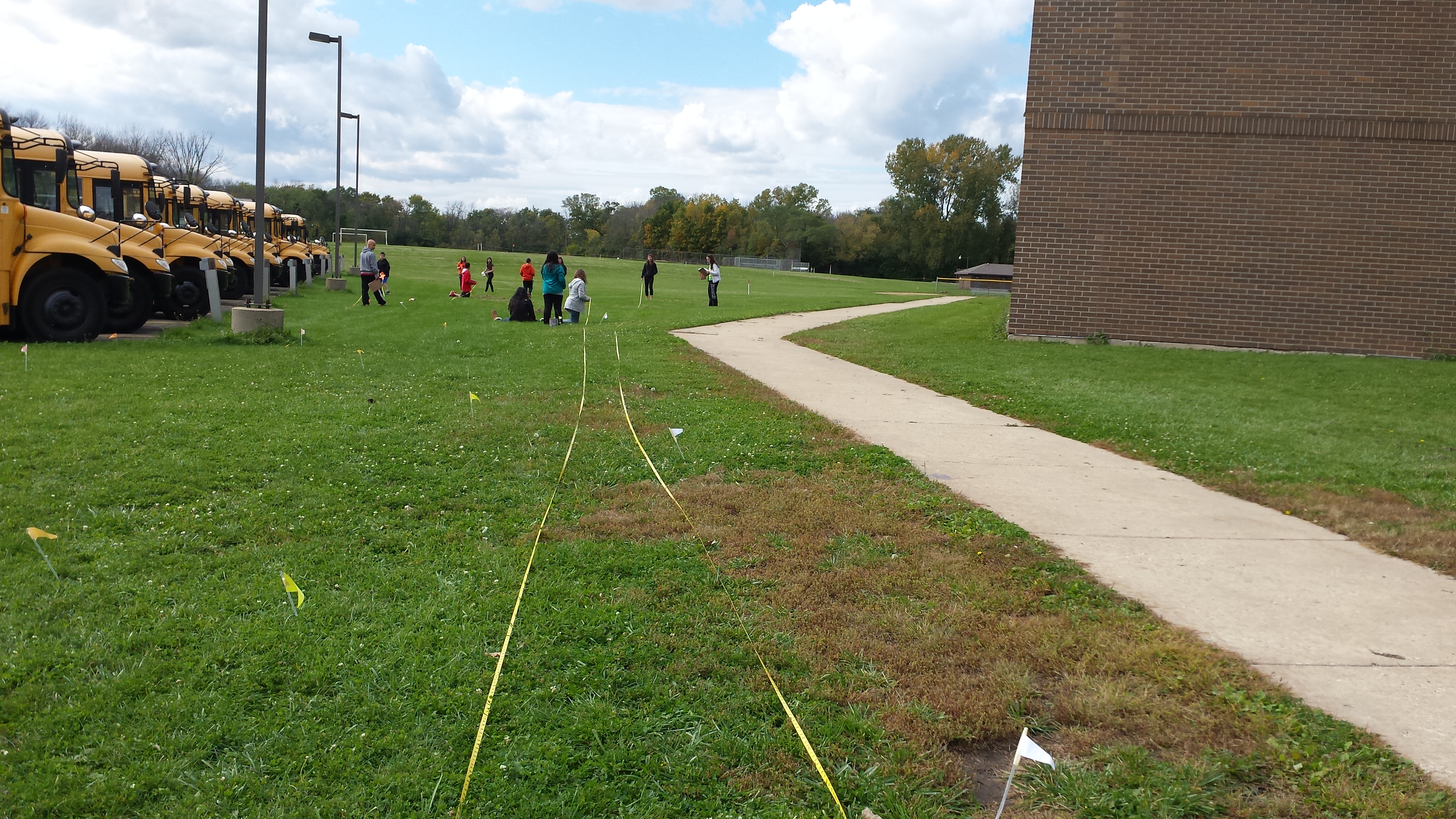 In this activity, students set up their own solar system models by working in groups
In this activity, students set up their own solar system models by working in groups and using a sun model of a much smaller size than in the
Whole Class Solar System Walk of Topic 3.
This exercise works well to impress students on the effect different scale factors
make on planet distances.
Students really enjoy this activity and are constantly comparing their outside layout with other students reinforcing the concept of scale modeling.
Lección: 1 Archivos: 2 -
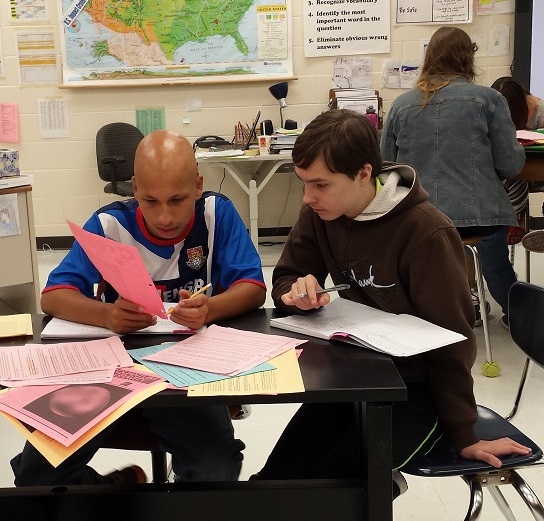 Students gather data on the moons of the solar system and choose the moon they would like to model.
Students gather data on the moons of the solar system and choose the moon they would like to model. The particular moon's characteristics are recorded and organized for use in their 3-D model in Activity 6.
There are several links to consider watching to introduce this topic and more resources can be found in the folder below.
What Makes a Moon so fascinating?:
https://www.google.com/?gws_rd=ssl#tbm=vid&q=what+makes+a+moon
Solar System's 10 Most Incredible Moons.:
Carpeta: 1 -
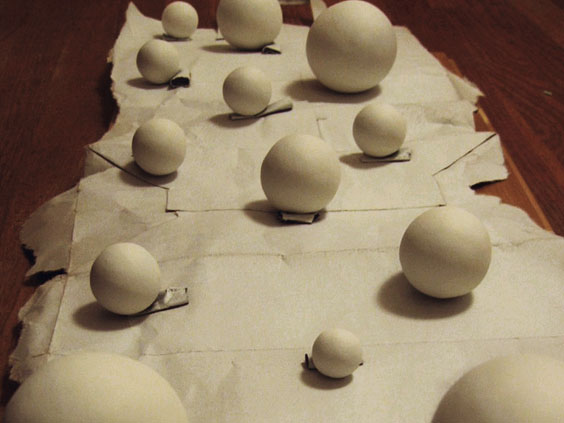 Students make a model of their selected moon (Activity 5) by using papier-mâché and
Students make a model of their selected moon (Activity 5) by using papier-mâché and adding features that are to scale. As seen in Activity 4, Solar System Modeling Lab with
different sized sun models for the group solar systems, the larger the scale factor, t
he larger the model and the easier it is to the see the details of the model,
so students should be encouraged to make their selected moon at least 12 - 18 inches
(30 - 45 cm) in diameter. Tips for the moon construction are found in the folder below.
Carpeta: 1 URLs: 2 -
The Academy is delighted you have chosen to participate in the activities listed under 'Fly Me to the Moons.' We would greatly appreciate feedback on your experience in the hopes of making this course as valuable as possible. Kindly give your thoughts in the short survey and add pictures of your students' products.
Many Thanks!
-The Spacedge Academy
URL: 1 Foro: 1 -
Send a Postcard to Space through NSS Supported Blue Origin Club For The Future initiative!
Visit: SpacEdge Academy Postcards in Space Course

